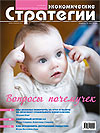Neuro-network test for entry into network community
Presentation of specific information in a human brain as a hierarchy of events, dictionaries, images of different occurrence frequencies and of different modalities is a model of the human world, consisting of three components – the individual multimodal right-hemispheric (right-handers) and two socialized left-hemispheric – multimodal and linguistic, which to some extent are (all) isomorphic to each other. Perhaps, a person’s mentality is determined by his model of the world. Maybe, comparing the world models (their linguistic components) of individuals it will be possible to understand the degree of their mentality closeness. Therefore, we can try to interpret the mentality of the texts’ authors on the basis of their texts. Comparing texts of the members of different “network” communities (closeness inside, difference between them), we’ll be possibly able to find out the principles of people’s unification in these communities.











